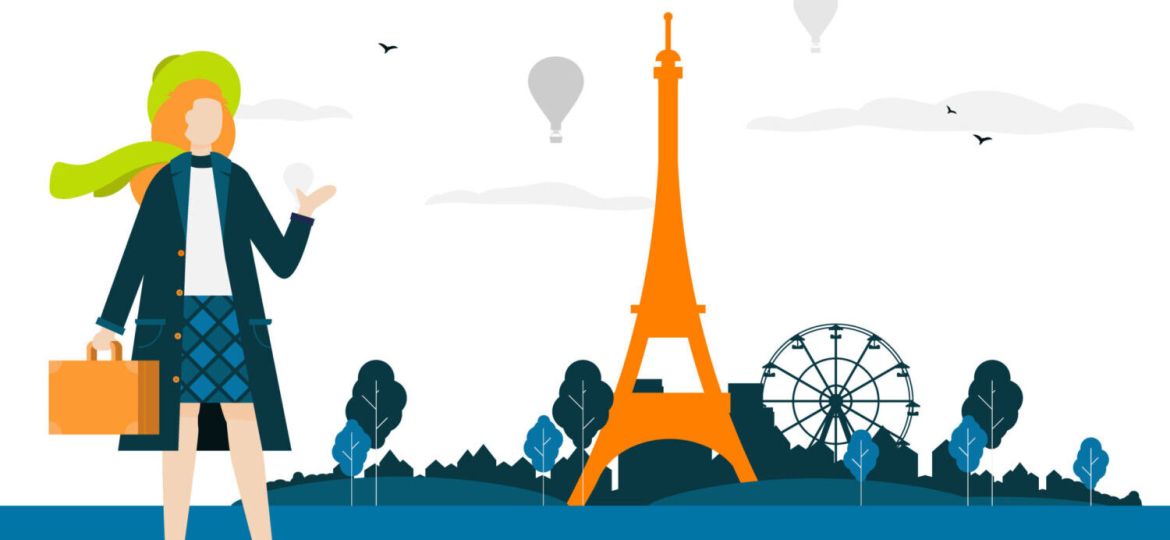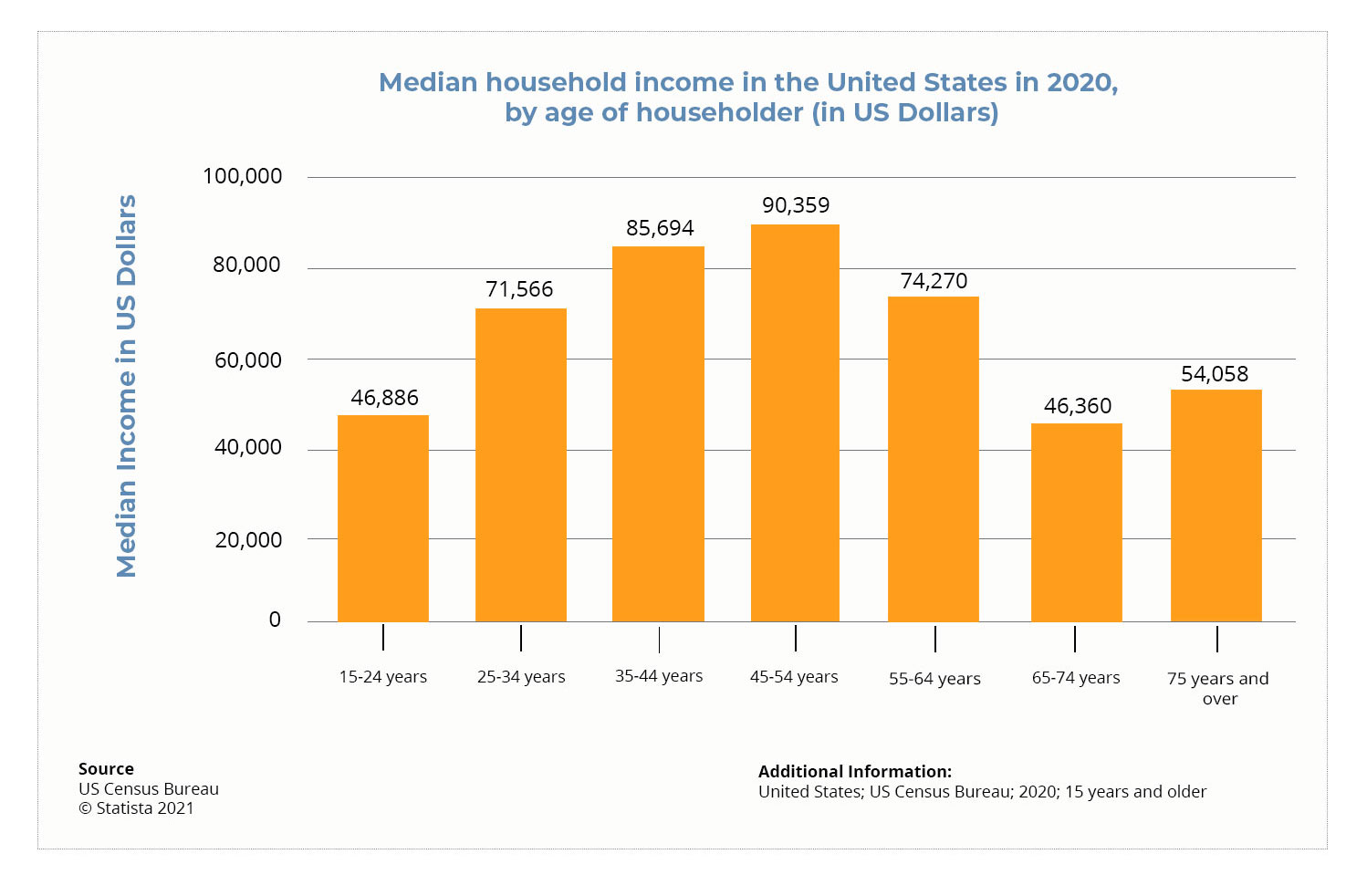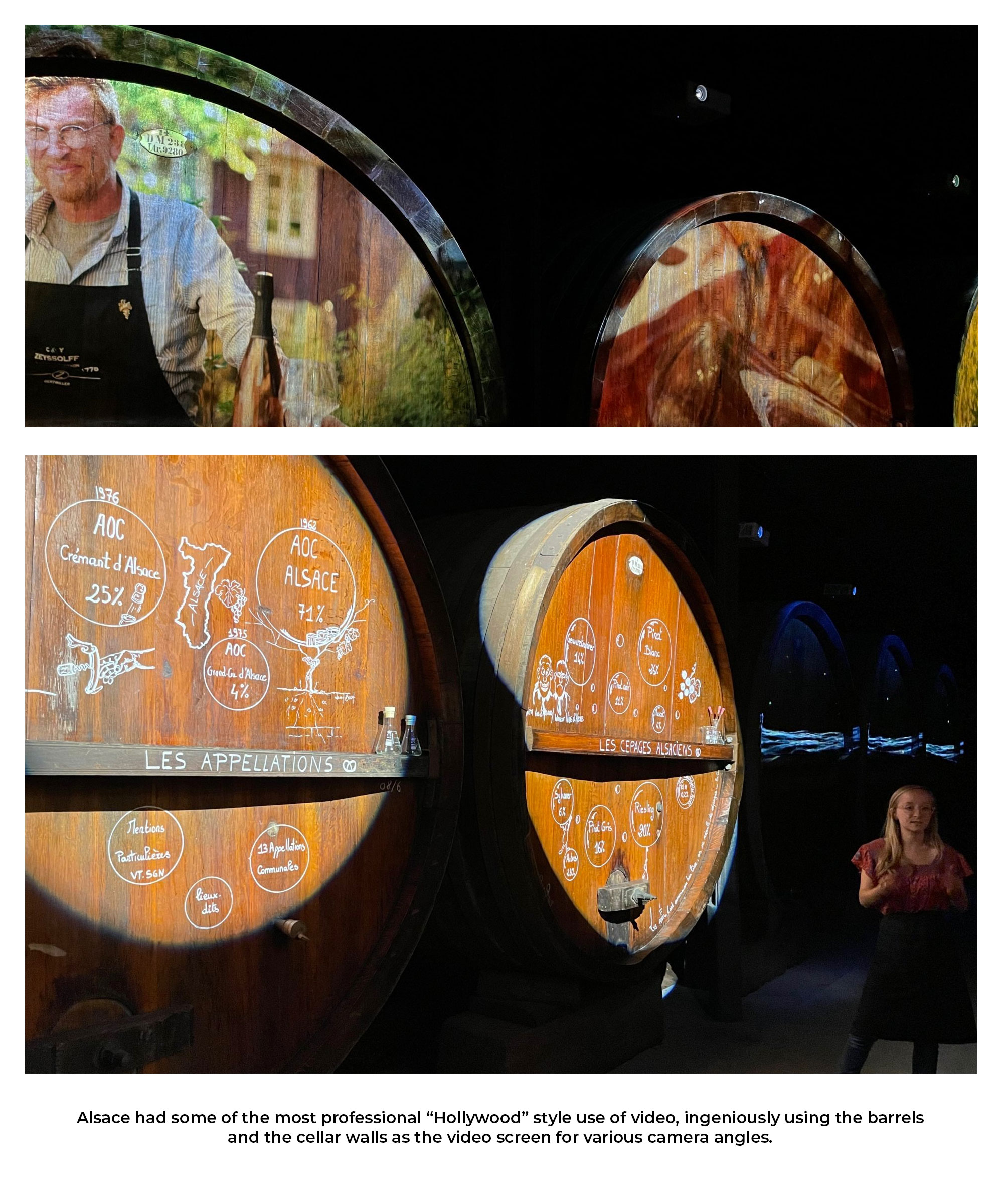
Insights From Overseas: Five DTC Trends from Europe
By Susan DeMatei
After navigating our client’s business and company growth during the last two roller-coaster years, I was ready for a significant break. Armed with credits from two canceled vacations and many pent-up credit card miles, I cashed in for an extended European visit in July. While there, my husband and I traveled to and stayed in four major wine tasting regions: Alsace, Champagne, Burgundy, and the Rhine/Mosel.
While there are countless and apparent differences between how France, Germany and the US promote tourism and sell wine directly to customers, there are equal similarities if you look hard enough. As a native of Napa, wine tourism and marketing washes over me. But, on this trip, I found myself in the rare role of a focused tourist. So, I became aware of the marketing cues and delivery vehicles and noted what worked, and what didn’t.
Here’s some of what I learned:
1. You can’t judge a baguette by its crust.
If I were to ask you to paint a picture of your ideal customer, who would you envision? Most have that gray-haired, tanned, 65-year-old couple on a sailboat in their mind. What if I told you that the average 25-55 year old was equal to or wealthier than most over 55?

And it goes beyond gray hair to the overall presentation. The casualness of today’s affluent consumers was apparent on day one in the premium airline lounge. Remember I mentioned the points? Well, I splurged all our points on an upgrade to Business Class for our 11-hour flight to and from Zurich, complete with the little fold-down bed and access to the private lounge at the airport. (I can’t recommend this enough, btw). I expected to see businessmen in suits and mature couples dressed in Sax Fifth Avenue or European power couples with effortless, crisp, linen summer button-downs and a nanny in tow with the two gorgeous well-behaved children. This was not what I saw. I saw 30-year-olds with backpacks and complete families with grandmothers in a wheelchair and many young children.
This observation continued at wineries. What struck me the most was the dress code. I know this isn’t the 60’s where you dressed up to go traveling, and we were in a heat wave, but even in Reims, where an average tasting can be 70€ and a bottle in the thousands, the standard was casual, very casual. Like pajama bottoms, gym shorts, flip flops, unbrushed hair, and ripped jeans casual.
Takeaway:
The days of the winery controlling the “exclusivity” of a visit have passed. Customers now decide where they think they fit in and boldly go there. Visually, the current wealthy consumer is indistinguishable from a person on minimum wage. How would you determine who “belongs” even if you could? It would be best to assume anyone walking through your door is self-selected to be at your winery and a potential buyer. Your control exists with a straightforward website with your story and brand, where you list your offerings and are clear about your pricing. If you execute traffic-driving initiatives, ensure your income and geography target is correct so you don’t get someone looking for a Toyota strolling into a Range Rover dealer. (If you need help targeting traffic to your winery, we can help.)
2. There is no excuse for a crappy website.
Wanting to be a part of the global wine community, for years my husband and I have offered up a room at our house for visiting harvest workers during the fall. This practice has allowed us to meet fellow wine enthusiasts worldwide and significantly improved our understanding of different cultures and agricultural practices.
We were lucky enough to have dinner with one of these friends in Burgundy with the CEO of Louis Latour. We had a lively discussion about sales and marketing about six bottles in. Our host worked for a prestigious Côte-d’Or winery with great wine and a horrible website. Latour is one of the best marketers in the business. I couldn’t help but tease our host that I couldn’t read or find anything on their website on my phone, and the wine we were drinking had no information online. He sliced another piece of cheese and got ready for a long, very French rant about how they didn’t need to sell wine as demand exceeded supply. I cut him off midpoint and asked why he had jumped immediately to a sales counterpoint. He paused and thought about it and then said that websites were for sales, and if you didn’t need to sell, why did you care about your website?
He had spent the beginning of the evening telling us about his essential client dinners in Zurich, Paris, and London (what we’d do for a Wine Club.) So, I asked if he’d go to those events wearing shorts and flip-flops. “Absolument Pas,” he replied. “Why not?” I said. “You don’t need to sell wine at these events, so why does it matter?” He then smiled as he followed my analogy as I took it one step further. “You care about how you appear to those 20 people because you care about your brand. But now imagine how many people will see your website. Then, add customers who purchased wine from a negotiant or in a retail setting looking for information about the vintage. That is why you care about your website.”
Takeaway:
You would think we wouldn’t have this discussion in the US, but we have it every day. Your website is your brand and your face to the world. It doesn’t matter if eCommerce is not a significant channel for your business or not; you need to care about the messaging, imagery, and general business confidence it says about you as a winery. And, since 81% of shoppers conduct online research before buying (Adweek), your website is a crucial step to purchasing at retail or in a restaurant. Still don’t believe me, check out Chanel, Maserati, or Rolex. They all have gorgeous websites, and I bet they don’t sell much online. (If you want a gorgeous website, we can help.)
3. Napoleon’s hat is cool but not what I was looking for.
My husband and I have seen vineyards and done our share of winery tours, but I was not going to miss the chance to tour the ancient and legendary cellars of the one-and-only Moët & Chandon. I have always been a Dom Pérignon fan, and as the parent company, Moët is the only place you can find it as a tourist. I was prepared to spare no expense for a high-end experience at this boutique and called ahead but was dismayed that they only had two options for visitors. I explained I was a Sommelier from Napa and that I was interested in the higher echelon wines I couldn’t easily find in the US, but there was no flexibility with options. Hoping for the best, I purchased the more expensive of the two tour/tastings.
Épernay is very similar to Napa. Small and hyper-focused on luxury winery tourism and visited by many tourists with various ranges of knowledge and spending power. Moët & Chandon didn’t disappoint with a grand entrance and seating area displaying several historical artifacts, including Napoleon Bonaparte’s hat.
But that was as interesting as it got. For the next 75 minutes, we were led through an introductory tour of the champenoise method-not, even very much history or specific information about Moët. It was the same script someone from Schramsberg could have used. A woman from Oregon wanted to ask questions, but at each juncture, she apologized and seemed embarrassed that she was interrupting the tour guide’s script with wanting to know more.
At the completion, we were rewarded with two glasses of vintage champing (the base level tour offered a single tasting of the current NV Brut as the only deviation). In the garden with our group, I listened to our group chatter as an Australian wine collector boasted about his cellar full of Penfolds Grange to a mother from the Netherlands with her son, who was celebrating his birthday (he had just turned 18). Then we were all ushered through the gift shop before exiting.
Takeaway:
What a tragic missed opportunity! With some foresight and flexibility, the Grange buyer and ourselves could have easily been delighted with an abbreviated tour and tasting of their high-end offerings. I’m sure we would have purchased 3x as much in half the time. Then the woman with the questions and the mother and son would have been within a smaller group of people who all could have learned about dosage or riddling while feeling more comfortable and heard.
Never underestimate the power of customized experiences or knowing your audience to maximize sales opportunities.

4. A little Nerd goes a long way.
The tools and technology used were as varied as the regions we visited. Alsace had some of the most professional “Hollywood” style use of video, ingeniously using the barrels and the cellar walls as the video screen for various camera angles. Mercier in Épernay has a full-size laser-guided train that tours their cellars and a video that interacts with its elevator. Dr. Loosen, in Germany, chose low-tech but equally effective blown-up laminated images of the vineyards and soils to accompany and explain their elaborate and complex Riesling tasting.
I can report an intelligent use of technology for a Wine Club experience. We belong to the Domaine Serene Wine Club in Oregon, and their sister winery is Château de la Crée in Santenay, Burgundy. I appreciated they were sufficiently connected worldwide to have my Wine Club information (even though I noticed la Crée wasn’t on WineDirect as Serene is). The customer service was seamless; they knew what wines we’d purchased and our entire history. But with language barriers, I respected that they also asked us to fill out a customer form to confirm they had information in their system correctly, and nothing needed updating.
A not-so-great but funny example of a technology miss is that thanks to COVID-19, most cafes and some European restaurants have removed menus entirely in favor of QR code stickers on the tables. This reduces waste and time, lowers germs, and is easier to update, so it seems like a great idea all the way around. That is until your phone runs out of juice (which happened), or your sticker is ripped or faded (which happened), and you’re left awkwardly sneaking to another table or flagging down an annoyed waiter to find a menu. And sometimes, the user experience isn’t thought out, as when I found a restaurant on my phone via Google and wanted to see the menu. Hence, a click took me to a page on the restaurant site with a QR code to take a picture of to take me to the menu (which, of course, I couldn’t do as I was already on my phone.).
Takeaway:
We can use technology to enhance or confuse our customers. It can improve creativity, help communicate a message, make the visit memorable, reduce waste and germs, and help your customer and employee experience. Just ensure you know why you’re using it and employ it with intent and purpose.
Also, always have a low-tech backup for when tech fails or you need to communicate with a neophyte. (If you want nerds on call, we’ve got you.)
5. Your Mom was right; the crowd you hang with does matter.
Probably because the traditional French put so little emphasis on their websites, it is standard practice to shuttle website visitors off to partner sites to complete reservation transactions. As with the US, there are several competing reservation engines and apps claiming to offer the best deals and most comprehensive choices. And, as with the US, many of these have poor UX practices forcing complete signup and registration before you can search your desired booking time. I spent a very long car ride signing up for no less than four apps before finally finding one with the English-speaking tour I wanted (Even then, I never got a confirmation). Plus, I now have a membership to two European restaurant reservation apps. These six were the ones I trusted enough to register. Half a dozen others didn’t look legit enough for me to want to give them my email, phone number, and credit card information.
Takeaway:
Partners matter, especially if you’re asking your customers to put their trust in someone else to complete a transaction. Vet these partners carefully. Sign up on their sites and review their presentation, checkout, and confirmation. Look at where and how they employ your branding. Typically, wineries evaluate such partners on how easy it is for their staff to use them or the fees but overlook the end-user experience. Please make sure you’re satisfied with how they treat your customers.
C’est La Vie!
It’s been several years since I’ve been to another wine region to compare “cellar door” marketing and programs and I can say Europe has come a long way toward our new world DTC practices here in the US. I am encouraged that as younger consumers become more educated, affluent, and demanding, the pace of evolution will continue to increase. There will likely be additional channels and tools that we are just beginning to explore in another few years.
Susan DeMatei is the founder of WineGlass Marketing, a full-service direct marketing firm working within the wine industry in Napa, California. Now in its 10th year, the agency offers domestic and international clients assistance with strategy and execution.
For two consecutive years, Inc. Magazine recognized WineGlass Marketing as the only Napa company listed in the top 250 hyper-growth tier of the “5000 Series California’s Top Companies”. WineGlass Marketing has also been recognized by the community winning the North Bay Bohemian “Best Digital Creative Services” spot for both 2021 and 2022, as well as being honored by her clients in the North Bay Business Journal as Napa’s “Best Company to Do Business With in 2021.” In addition, the firm has taken top honors in the 2021 Web Awards for Best Beverage Website and 2021 Internet Advertising Competition for Best Integrated Ad Campaign in the Beverage Category and the 2022 Internet Advertising Competition for Best Wine Website. The agency is also a Webby Honoree in Website and Mobile Sites at the 2022 Webby Awards.
WineGlass Marketing is located in Napa, California at 707-927-3334 or wineglassmarketing.com


